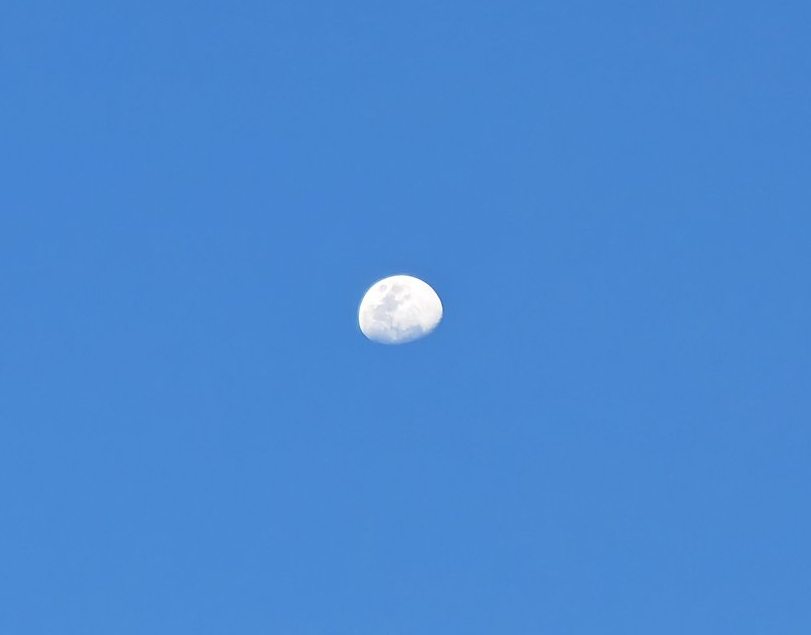English
Anyone who wants to admire beautiful and, at sunset, extremely colorful cloud formations should come here to Tagaytay... or, if that's impossible, take a look at this post!
But have you ever wondered what the reason might be that Tagaytay's sky so often presents itself with such breathtaking beauty?
The following factors likely play a role:
-
The High Altitude
Tagaytay lies more than 600 meters above sea level, making the clouds appear significantly closer.
-
The Proximity to Lake Taal and the Sea
Tagaytay is situated directly on the rim of the Taal Volcano with its large crater lake.
The sun-warmed water from Lake Taal and the nearby Manila Bay evaporates, rises, and condenses in the cooler high-altitude air into impressive Cumulus and Stratocumulus clouds.
-
The layer of clouds, formed by a permanent supply of moisture, reflects, scatters, and amplifies the sunlight, resulting in spectacular shades of red, orange, pink, and violet.
-
The comparatively clean air of Tagaytay, in combination with aerosols such as water droplets and salt particles from the sea, intensifies the colors.
-
A small contribution to the magnificent play of colors in the Tagaytay evening sky is made by the volcanic ash aerosols present in low concentration in the atmosphere, which enhance the scattering of light and contribute to particularly dramatic sunsets.
And now, enjoy looking at the pictures!
Deutsch
Wer wunderschöne und bei Sonnenuntergang äußerst farbenprächtige Wolkenformationen bestaunen möchte, sollte hierher nach Tagaytay kommen ... oder sich, falls das unmöglich ist, diesen Beitrag ansehen!
Aber habt ihr euch auch schon gefragt, was der Grund dafür sein könnte, dass sich der Himmel Tagaytays so oft in einer solch atemberaubenden Schönheit präsentiert?
Folgende Faktoren dürften eine Rolle spielen:
-
Die Höhenlage
Tagaytay liegt mehr als 600 Meter über dem Meeresspiegel, wodurch die Wolken deutlich näher erscheinen.
-
Die Nähe zum Taal-See und zum Meer
Tagaytay befindet sich unmittelbar am Rand des Taal-Vulkans mit seinem großen Kratersee.
Das von der Sonne erwärmte Wasser des Taal-Sees und der nahen Manila-Bucht verdunstet, steigt empor und kondensiert in der kühleren Höhenluft zu eindrucksvollen Kumulus- und Stratocumulus-Wolken.
-
Die durch permanente Feuchtigkeitszufuhr gebildete Wolkenschicht reflektiert, streut und verstärkt das Sonnenlicht, wodurch spektakuläre Rot-, Orange-, Rosa- und Violetttöne entstehen.
-
Die vergleichsweise saubere Luft Tagaytays verstärkt in Kombination mit Aerosolen wie Wassertröpfchen und vom Meer stammenden Salzpartikeln die Intensität der Farben.
-
Einen kleinen Beitrag zum prachtvollen Farbenspiel des Tagaytay'schen Abendhimmels leisten die in geringer Konzentration in der Atmosphäre befindlichen, die Streuung des Lichts verstärkenden und zu besonders dramatischen Sonnenuntergängen beitragenden Vulkanasche-Aerosole.
Und nun wünsche ich viel Spaß beim Betrachten der Bilder!
---
|
During the day, the sky often looks like this:
|
Tagsüber sieht der Himmel oft so aus:
|
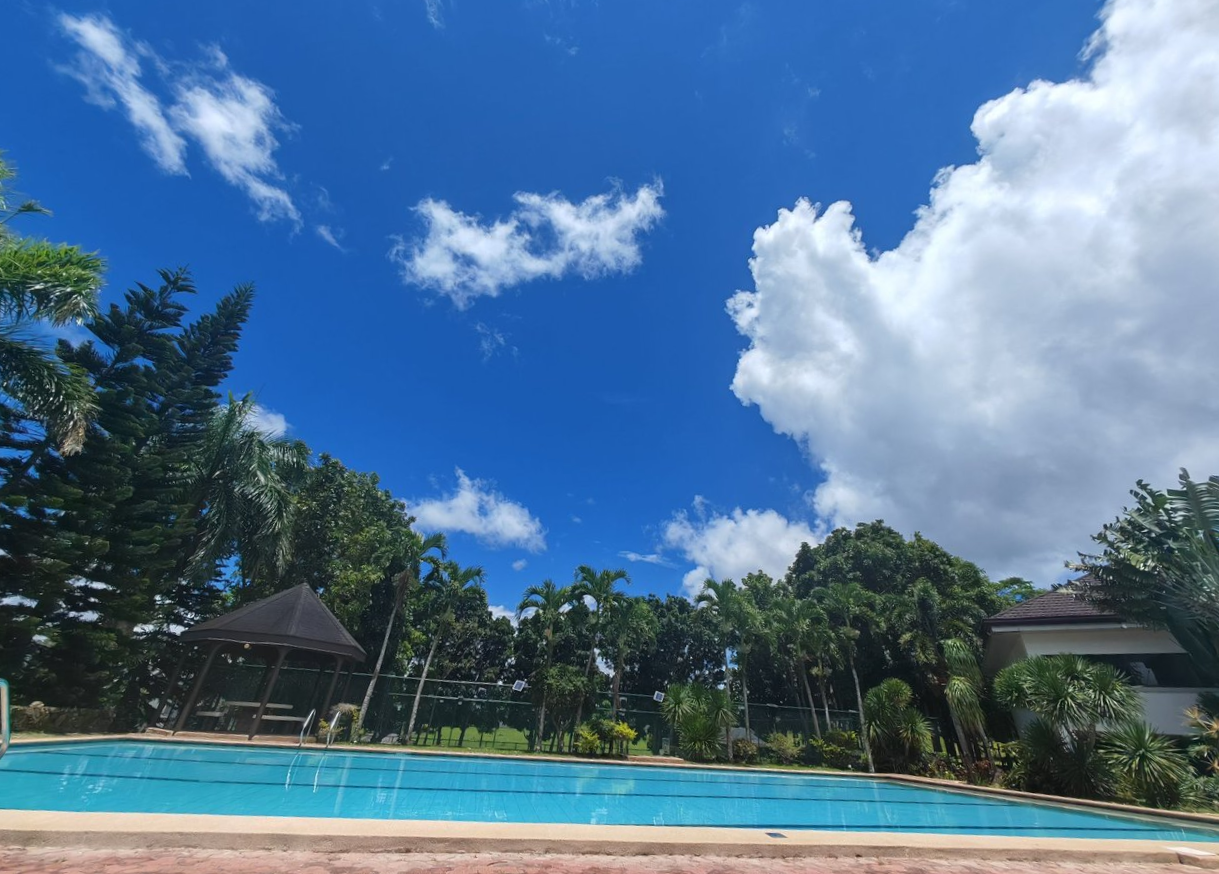
---
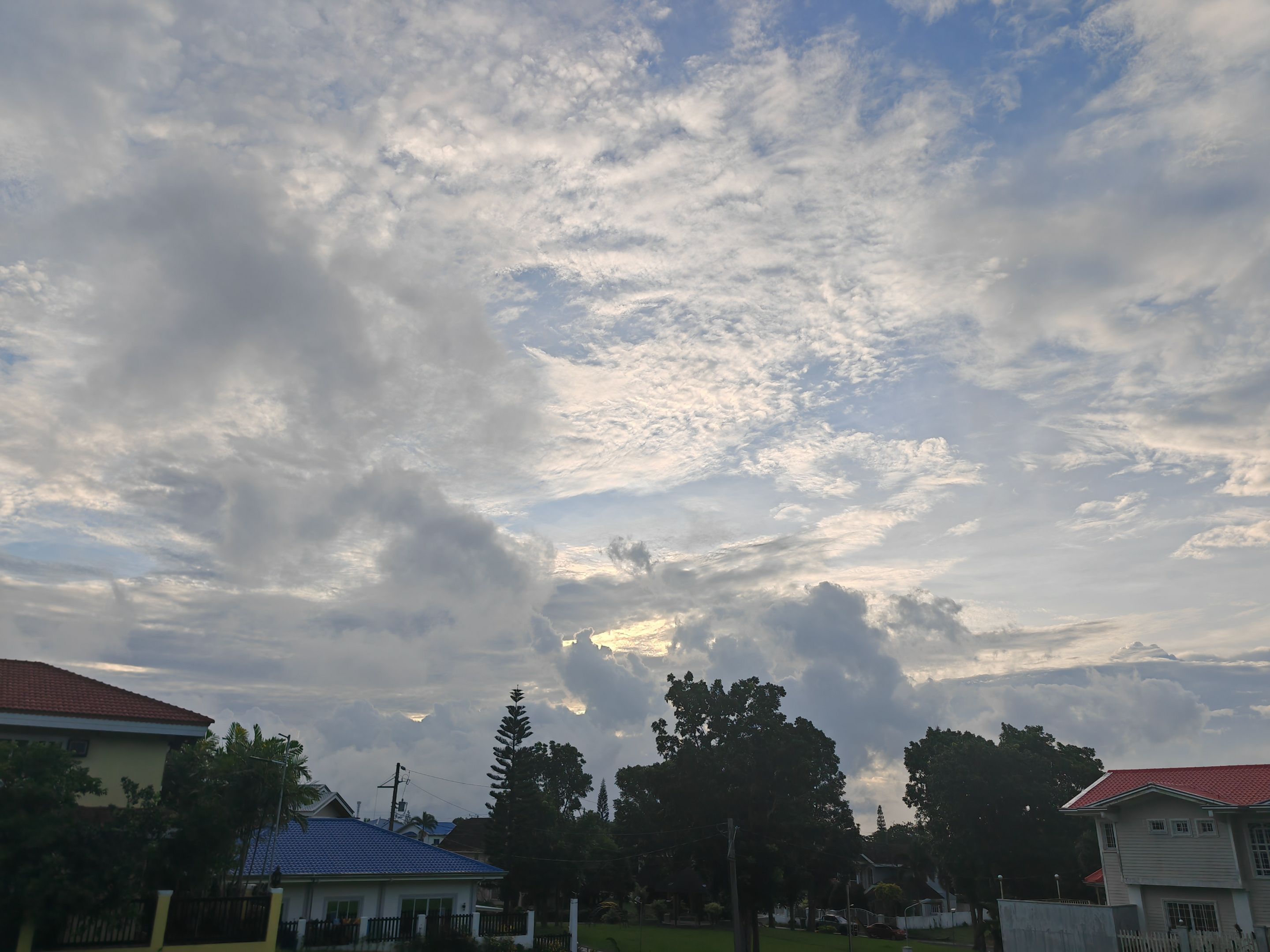
---
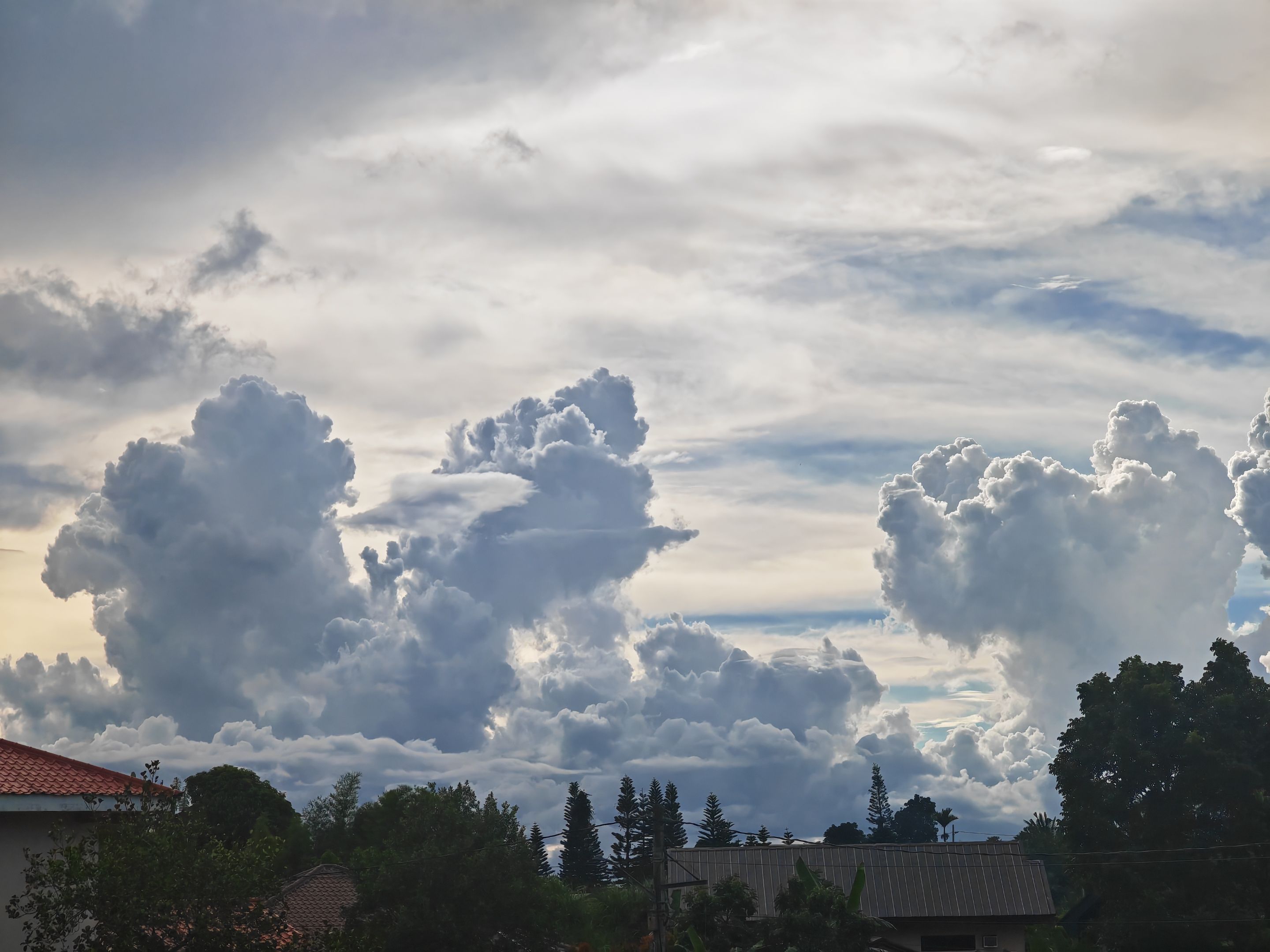
---

---

---

---
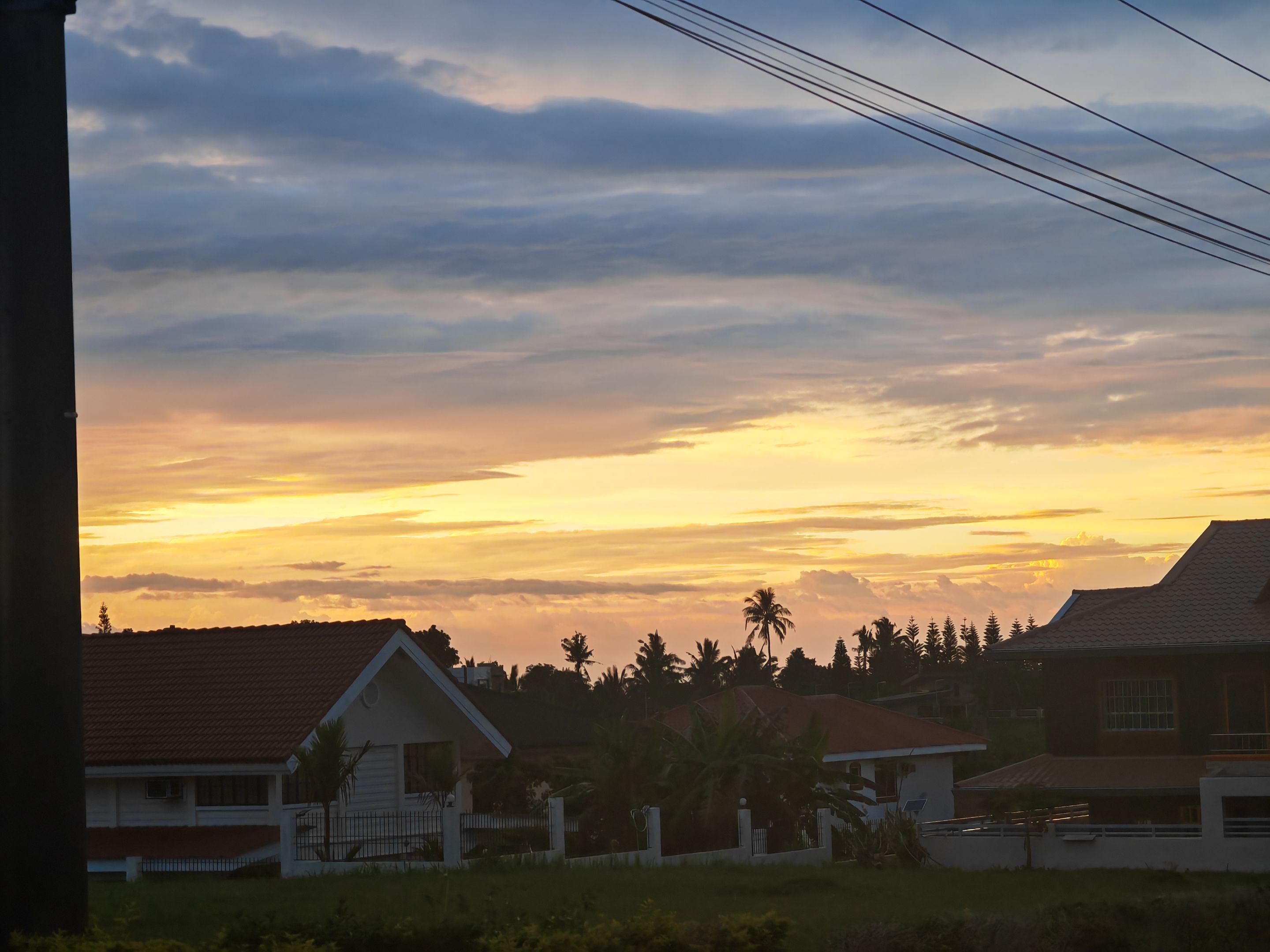
---
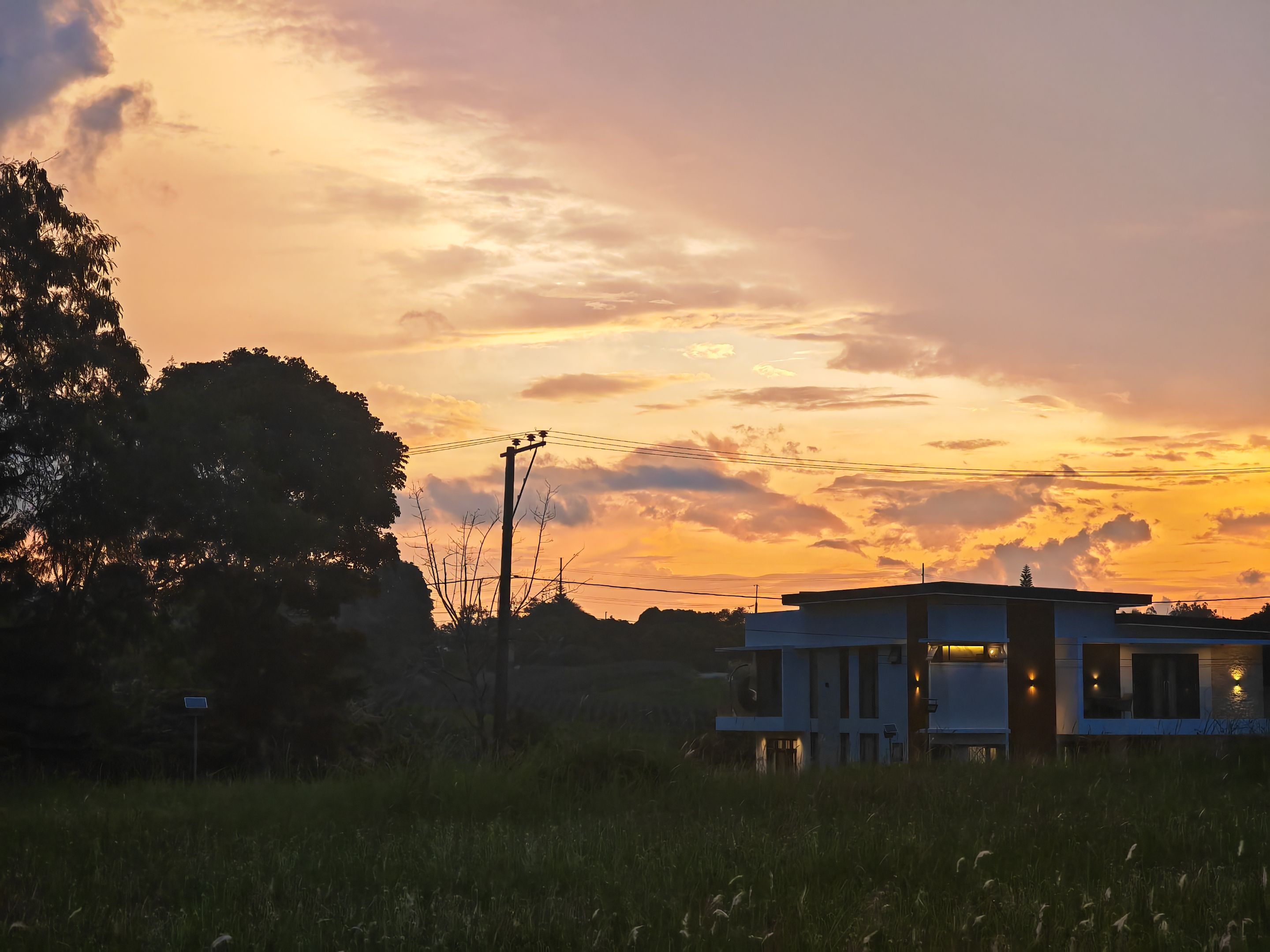
---
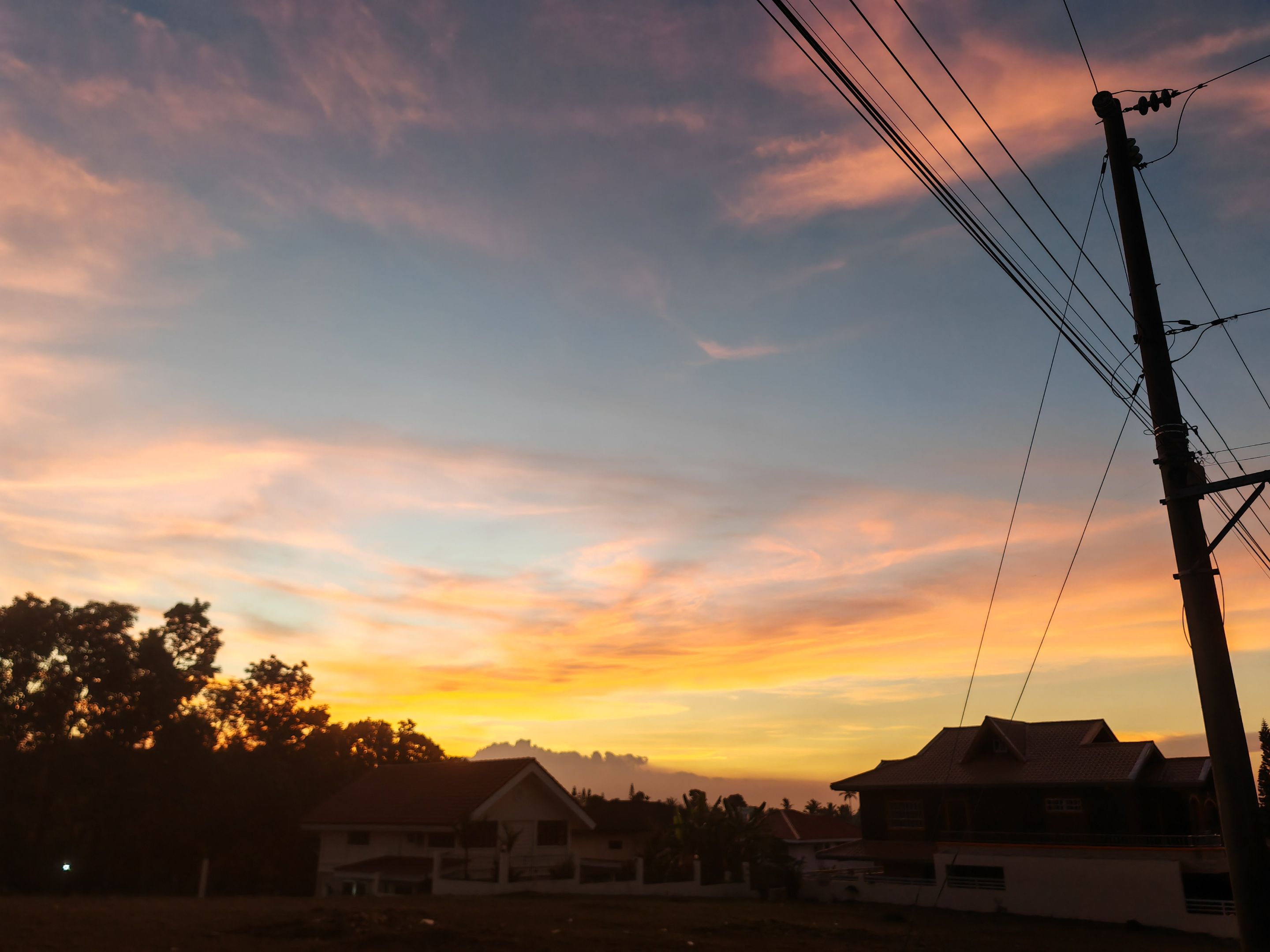
---

---

---

---
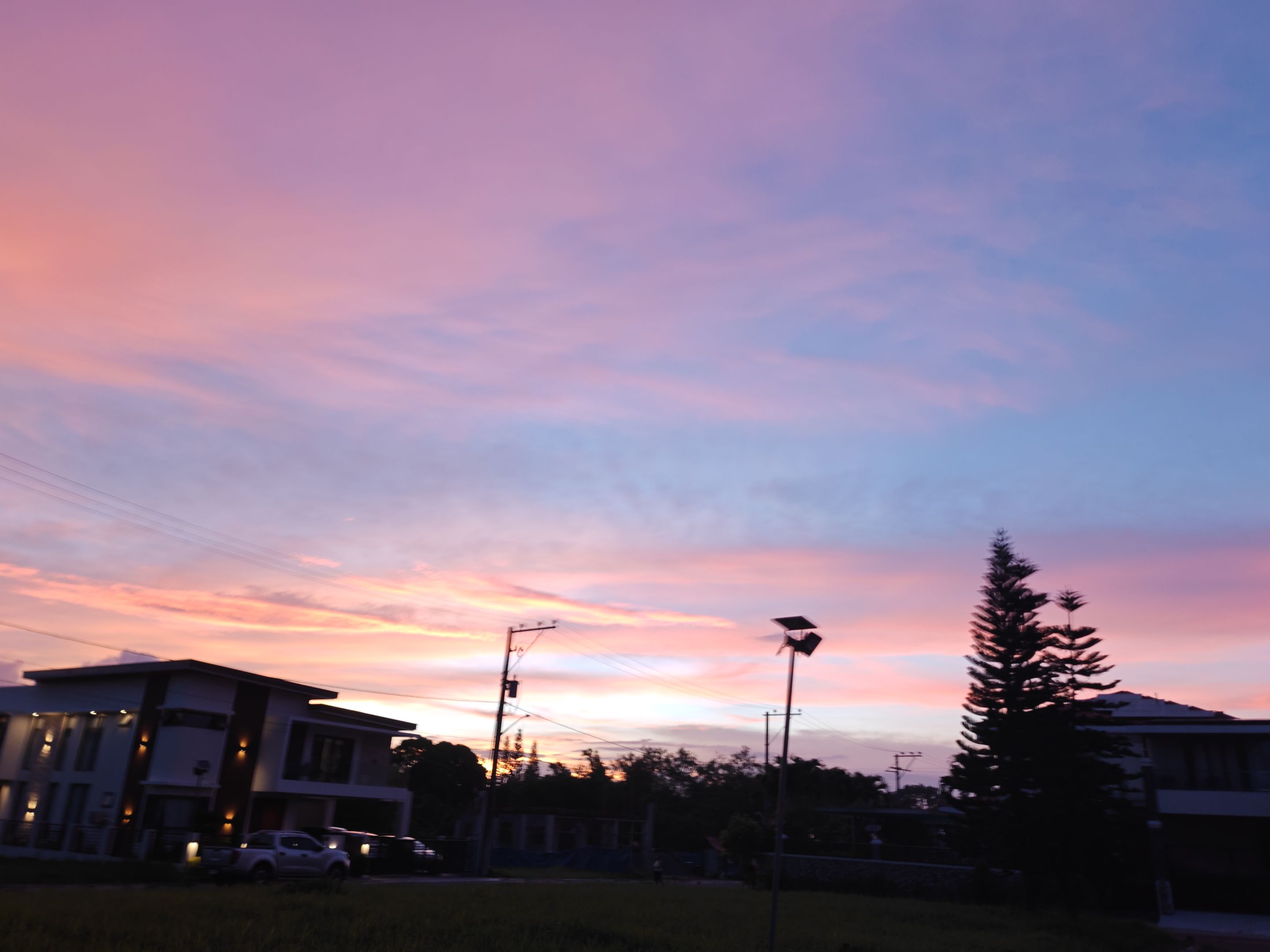
---
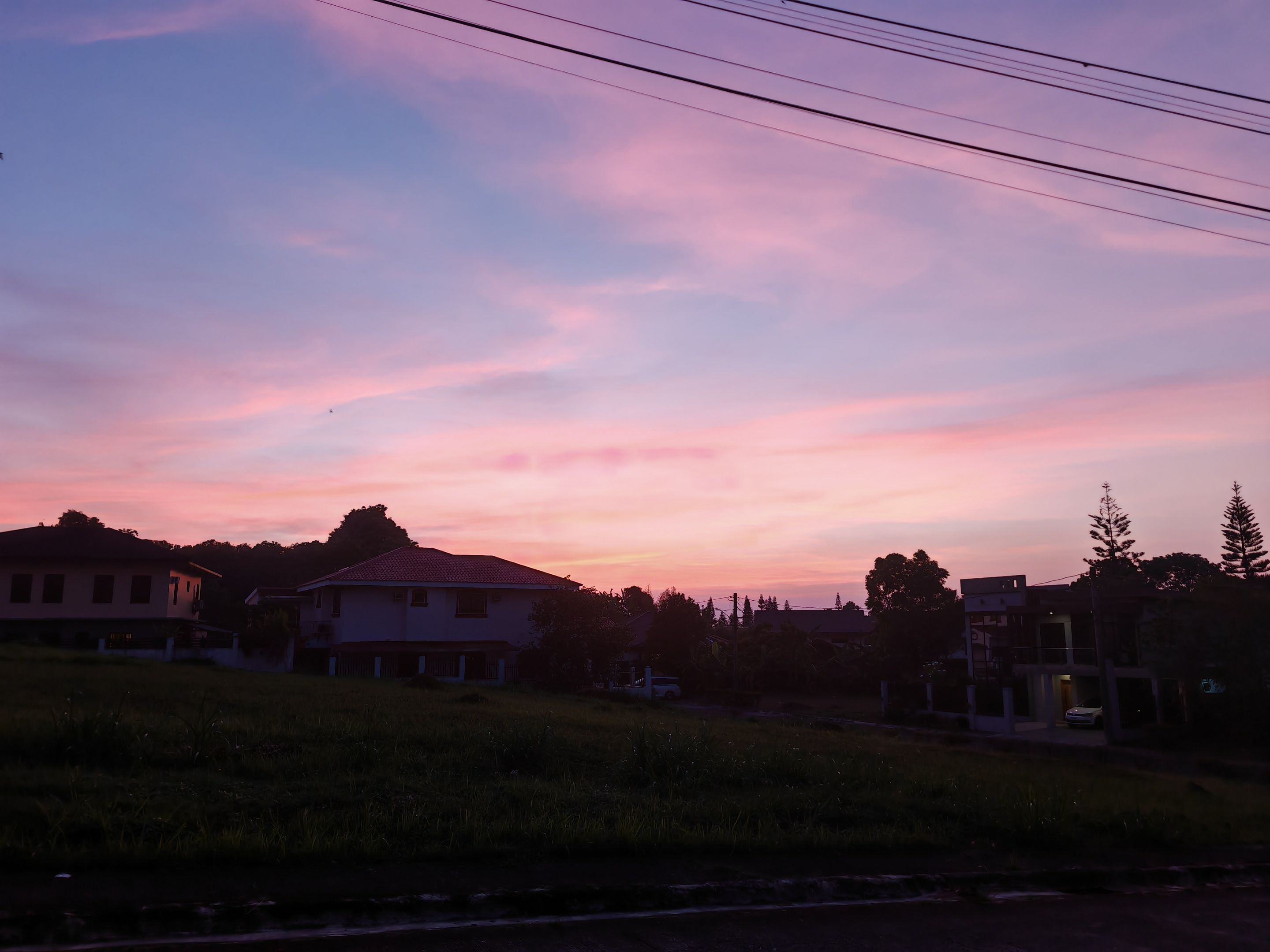
---

---

---

---
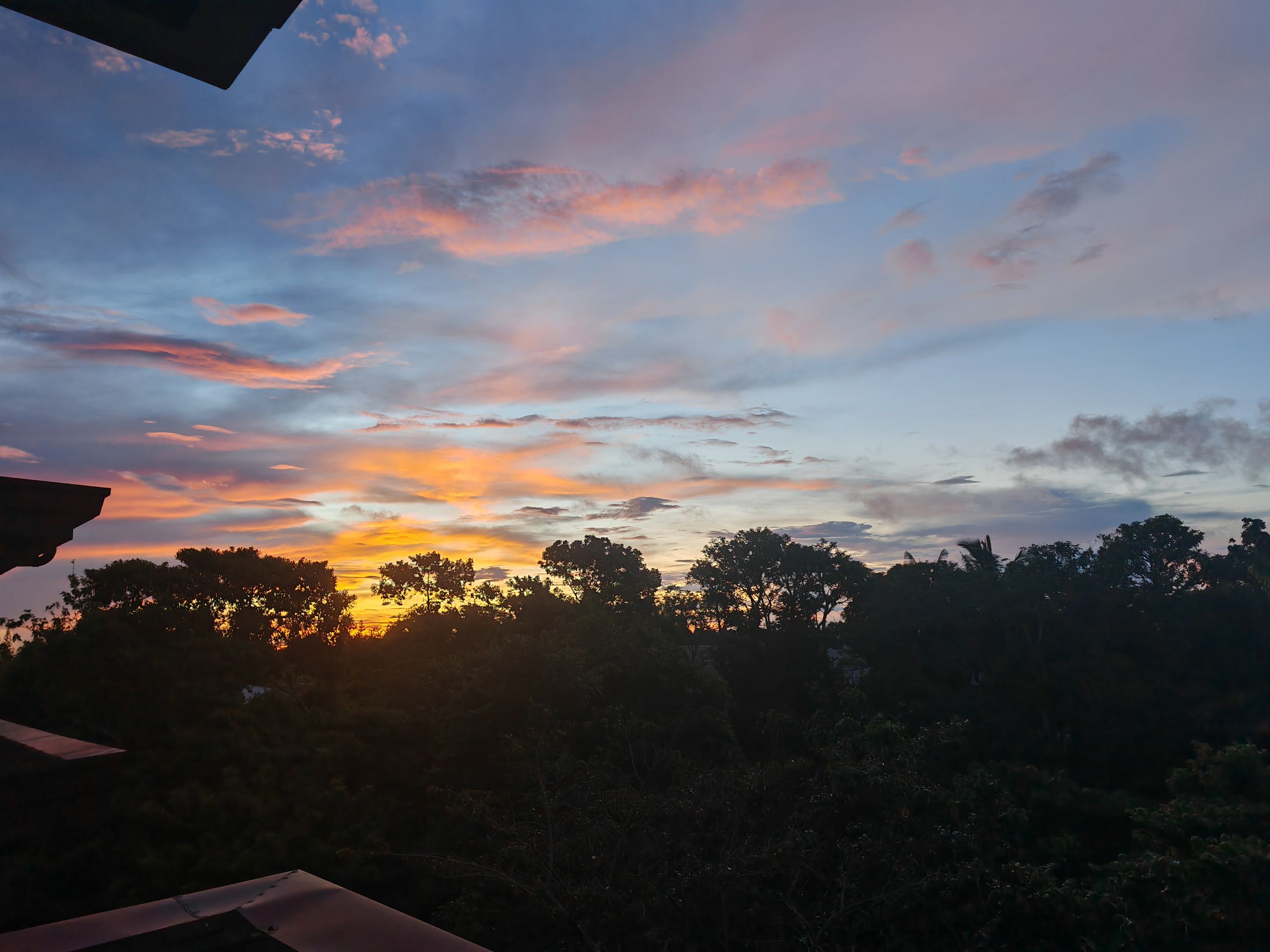
---
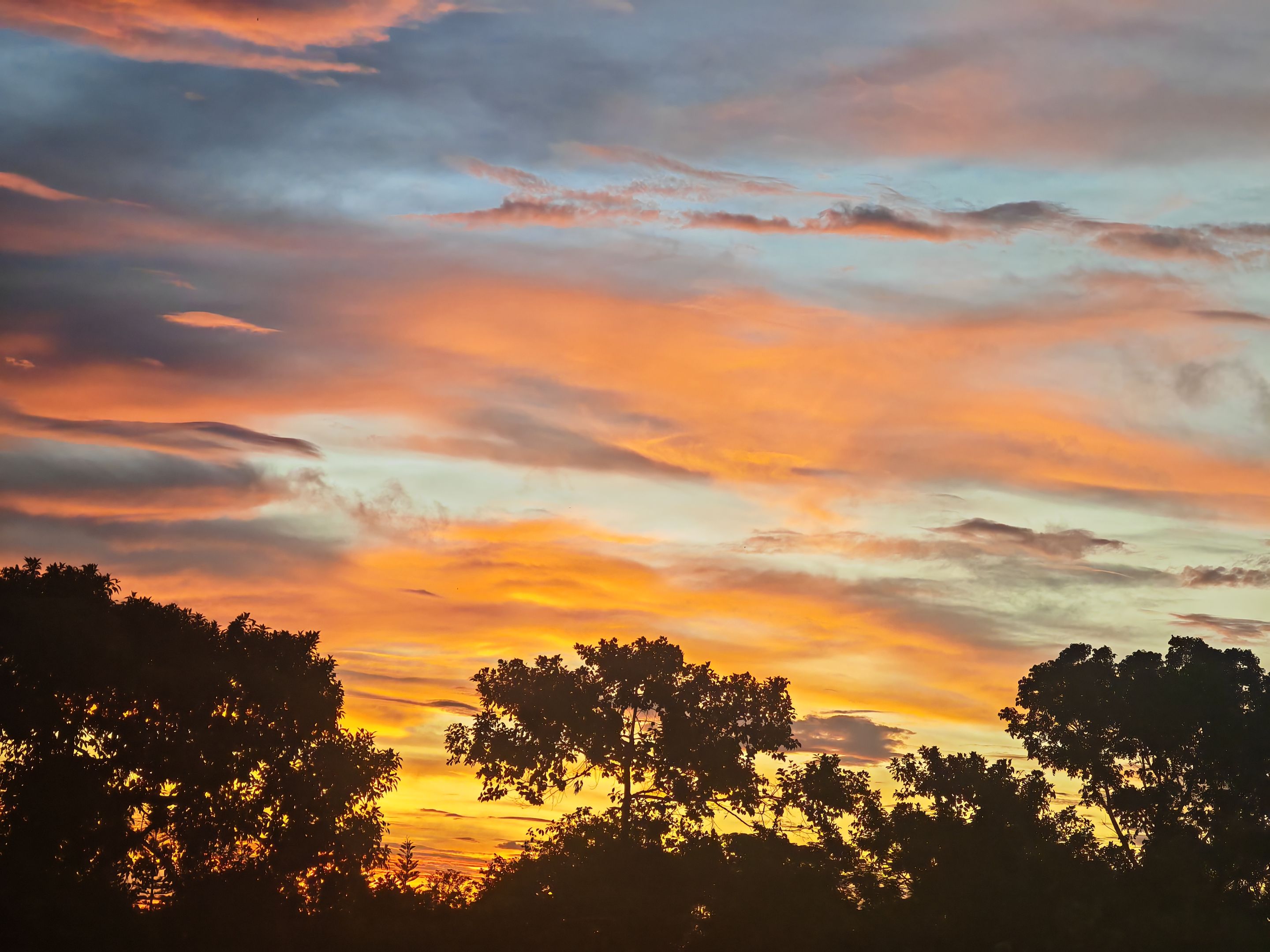
---
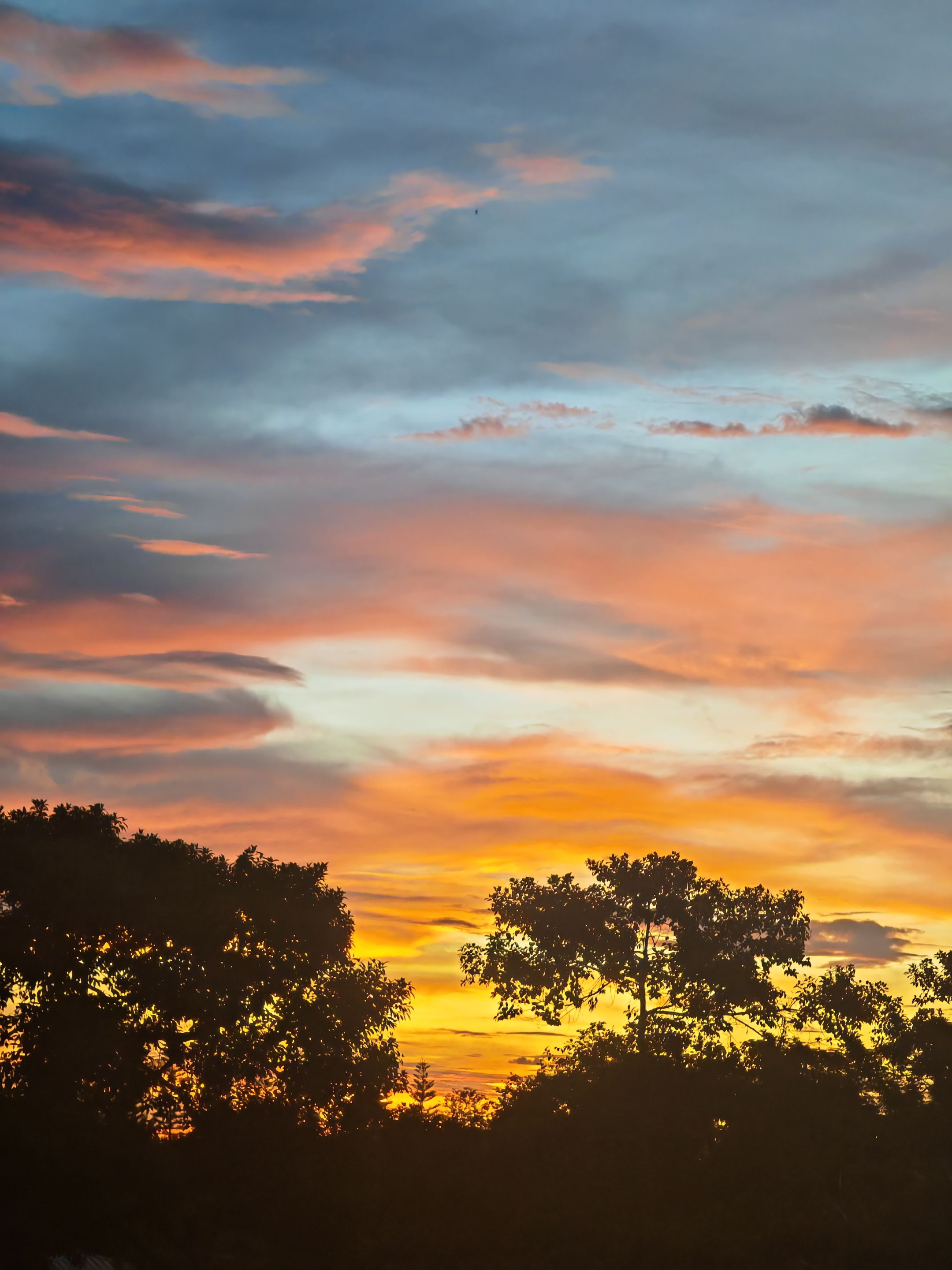
---

---

---
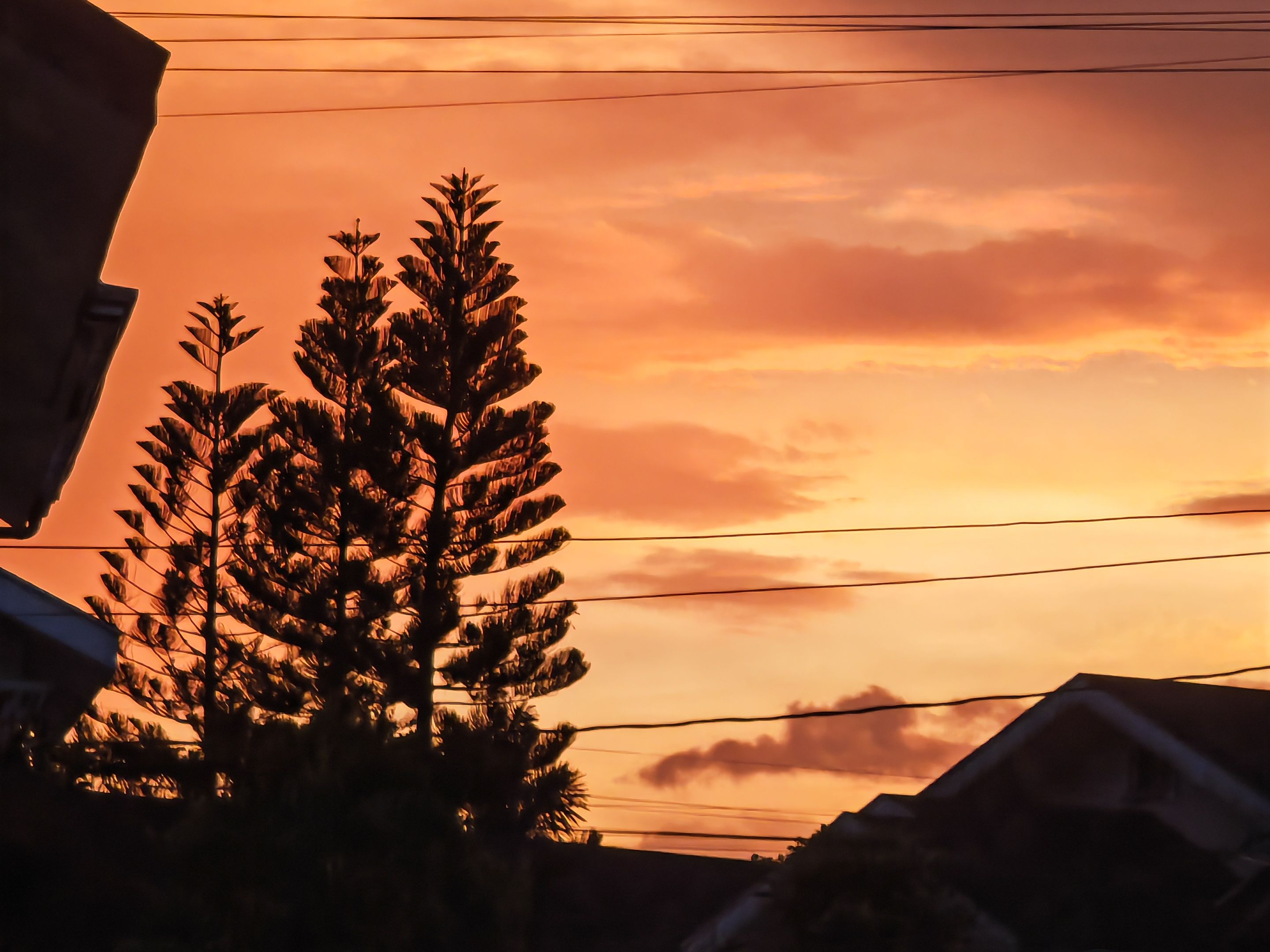
---
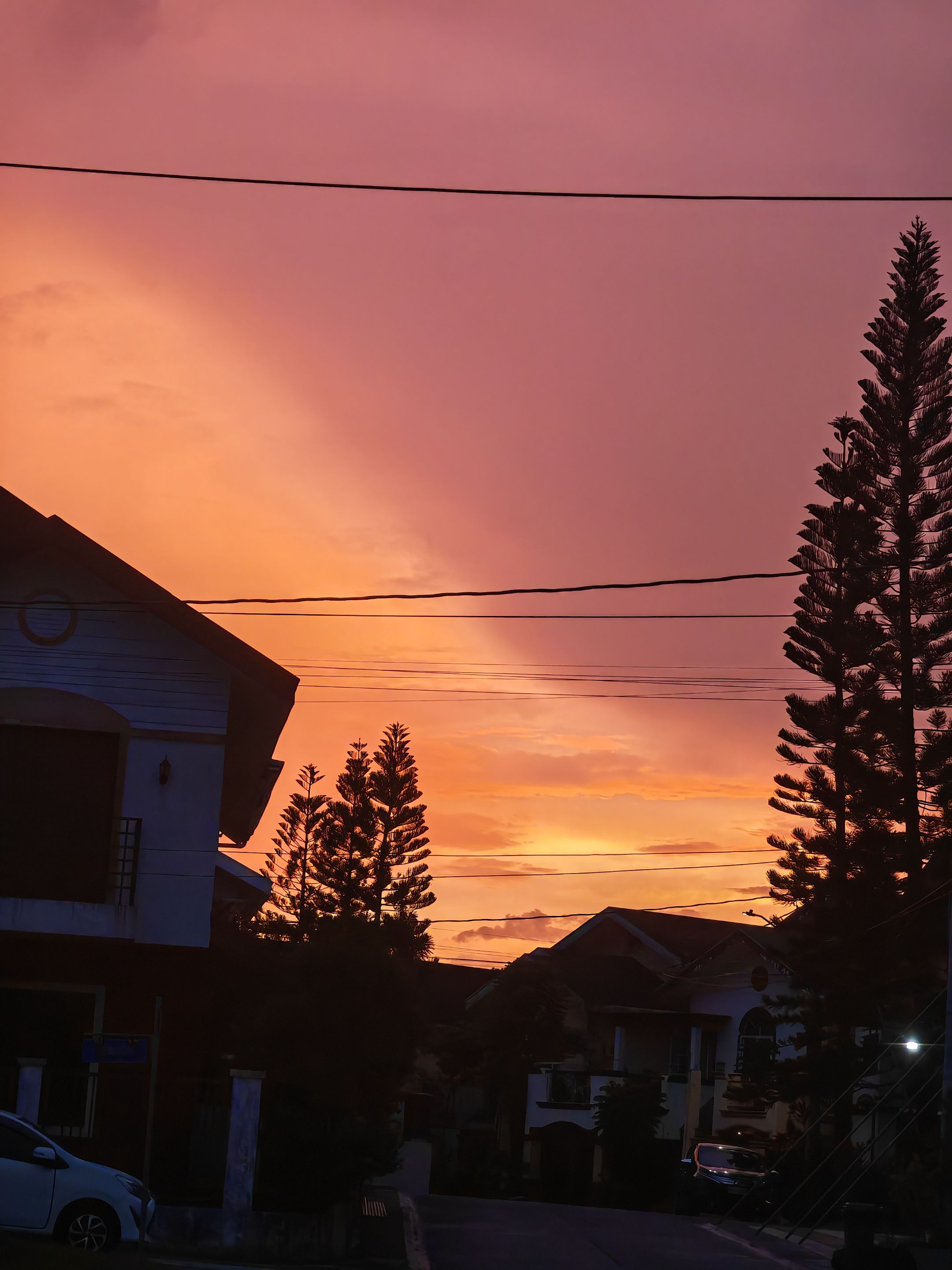
---
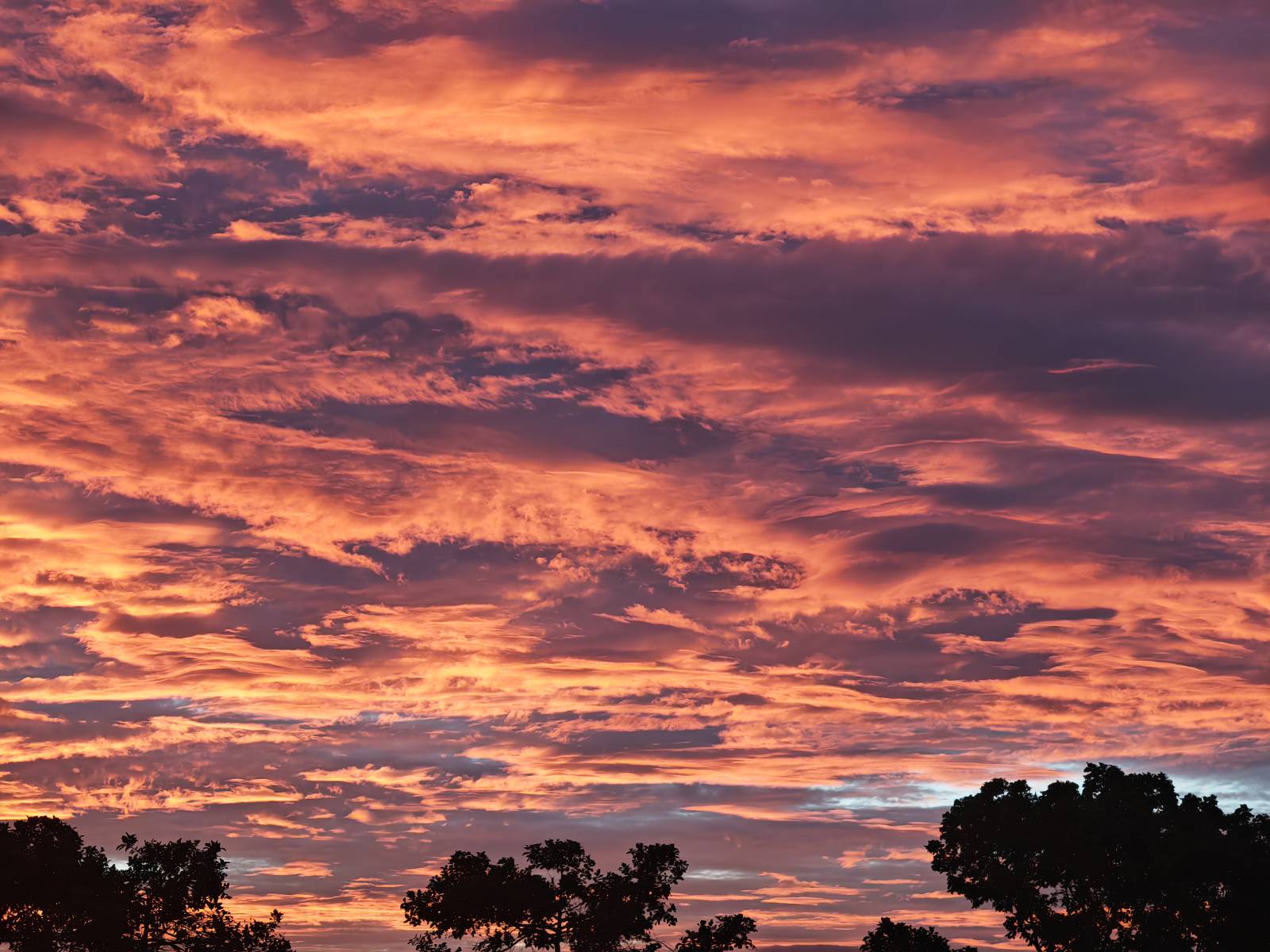
---
|
Magical evening atmosphere.
|
Zauberhafte Abendatmosphäre.
|
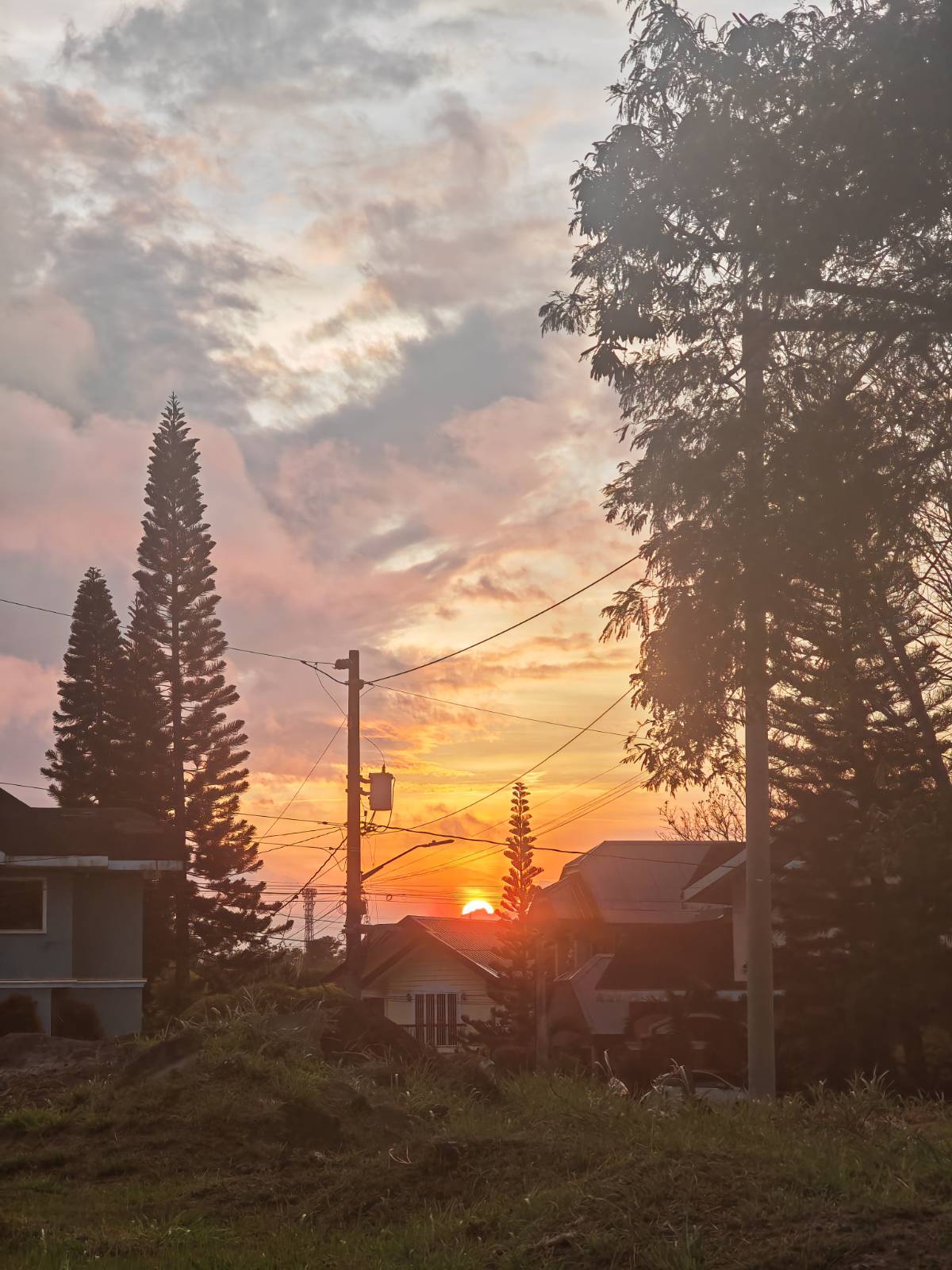
---
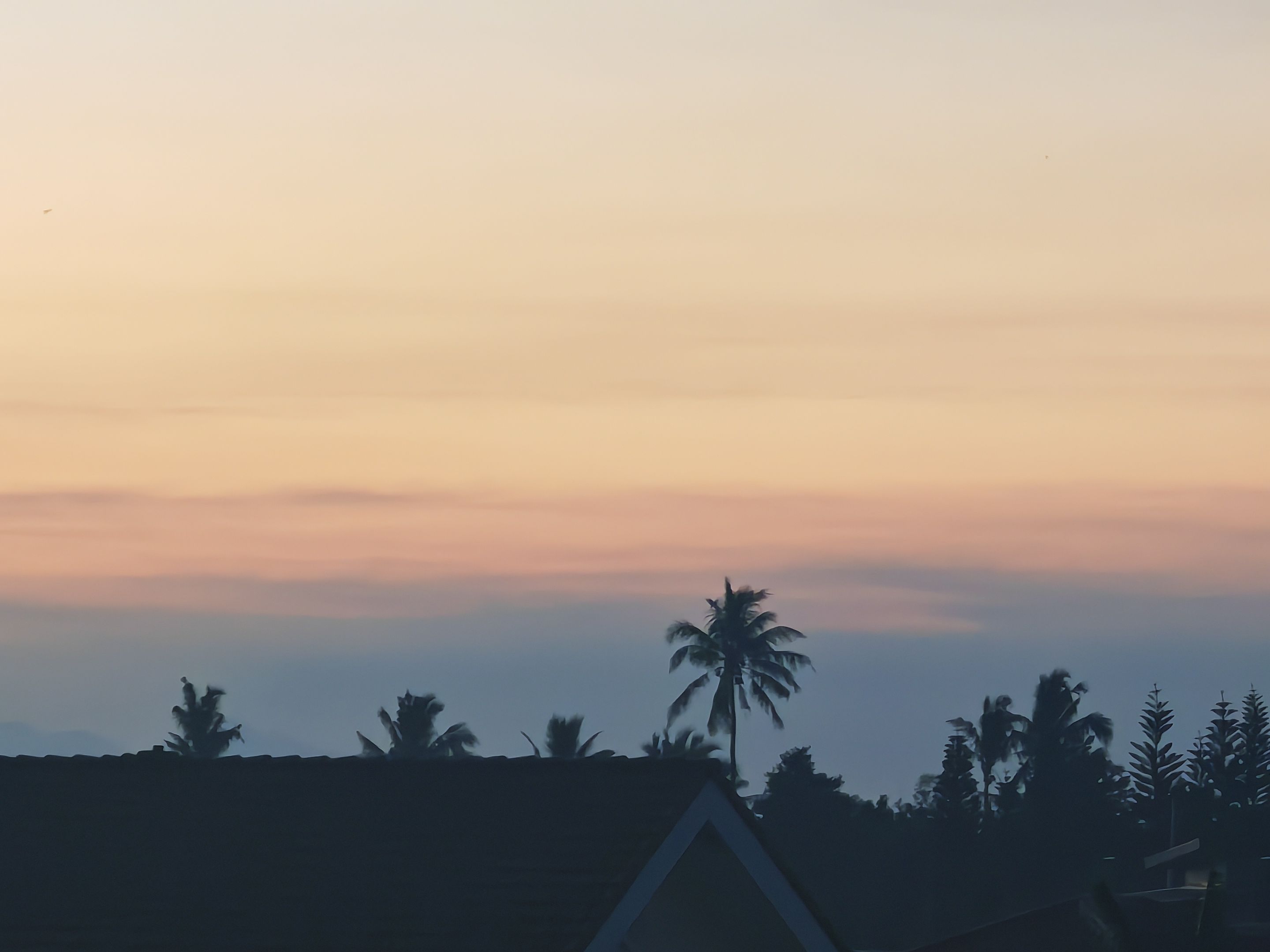
---
|
The rainbow divides the sky into two areas: gray on the left, blue on the right.
|
Der Regenbogen teilt den Himmel in zwei Bereiche: links grau, rechts blau.
|
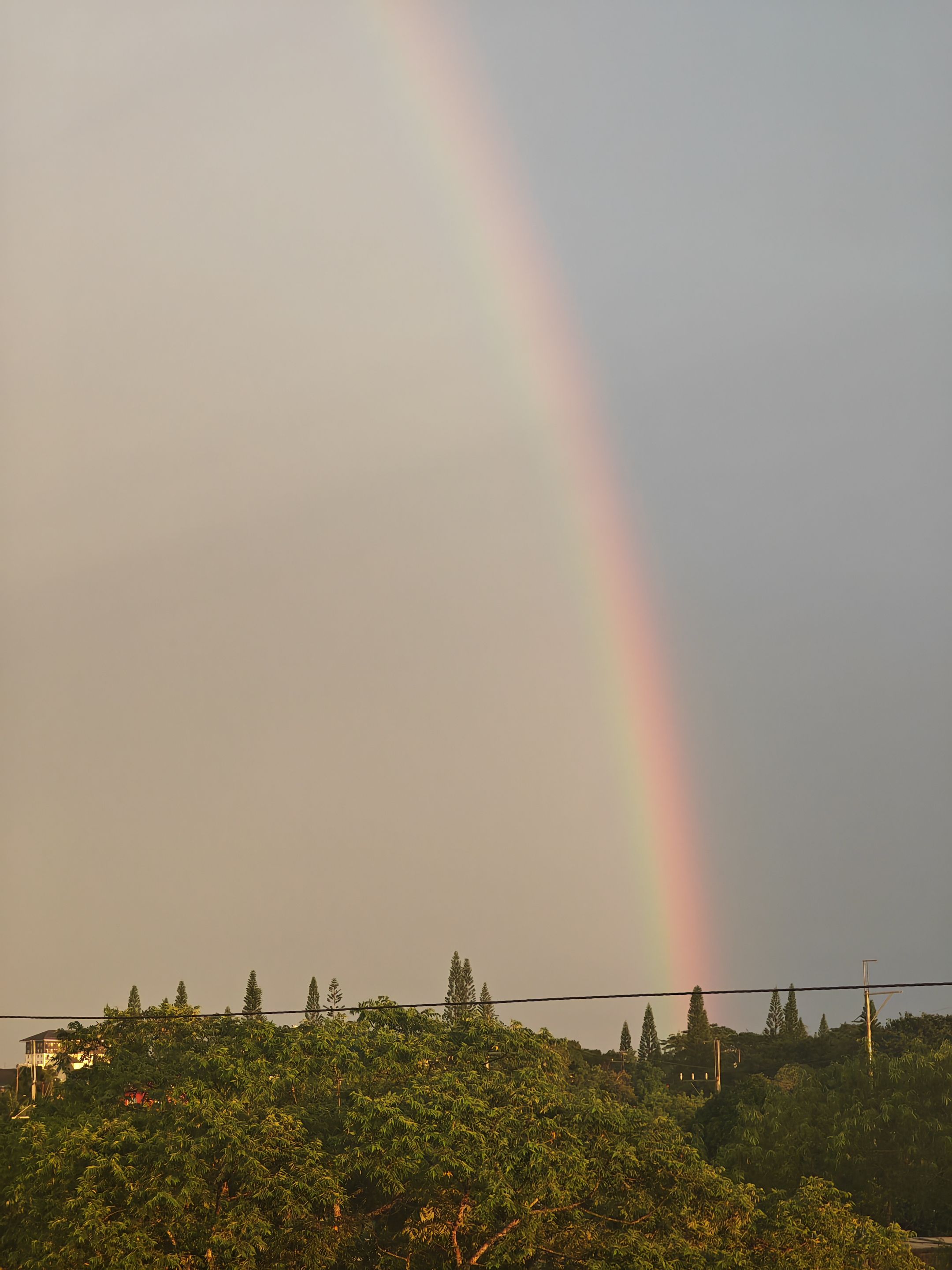
---
|
Upon closer inspection, a second rainbow can even be seen on the right side of the picture.
|
Bei genauerem Hinsehen ist rechts im Bild sogar noch ein zweiter Regenbogen zu erkennen.
|
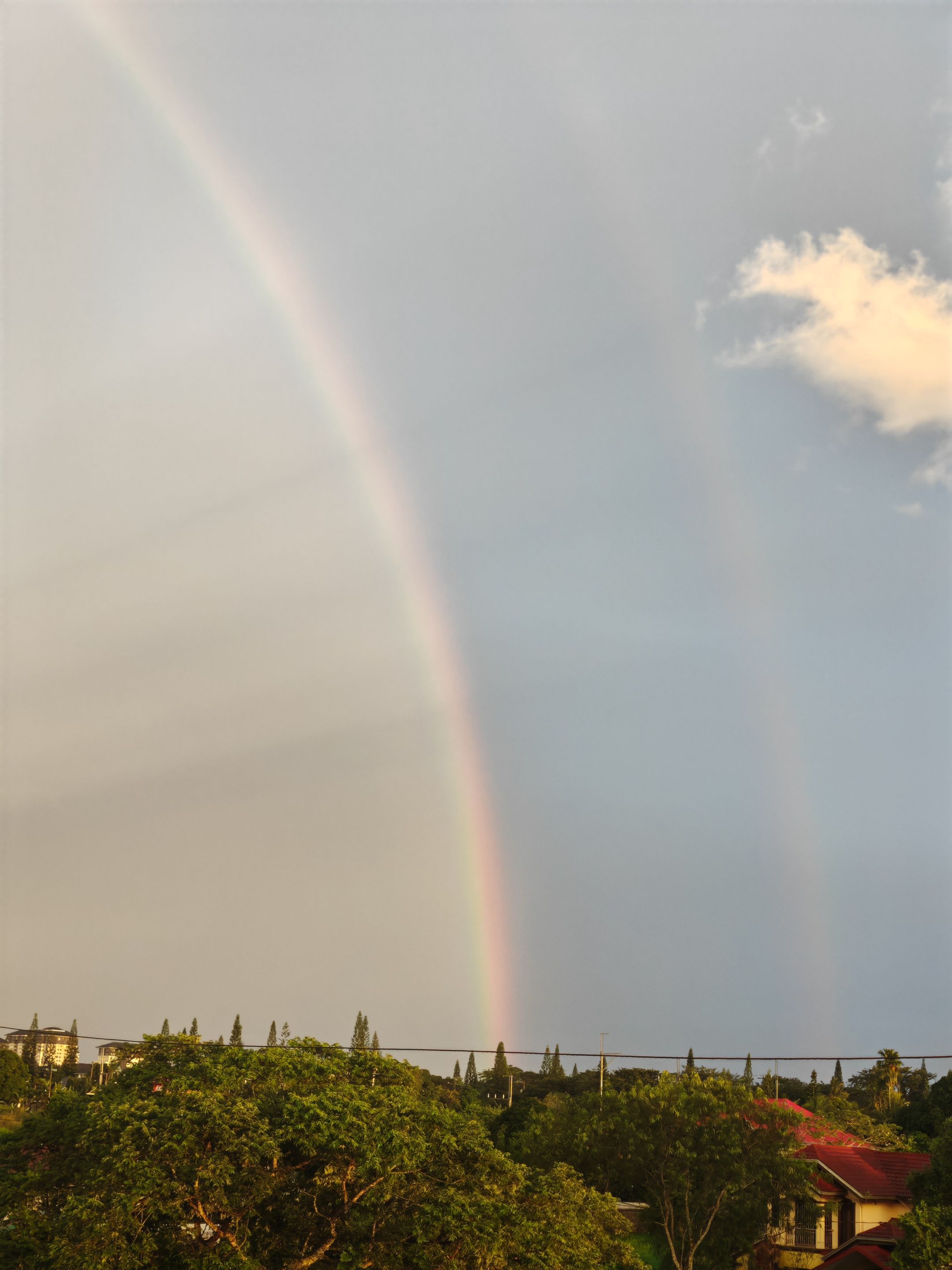
---
|
Although the sun has not yet set, the moon is already appearing in the brilliantly blue sky.
|
Obwohl die Sonne noch nicht untergegangen ist, erscheint bereits der Mond am strahlend blauen Himmel.
|
